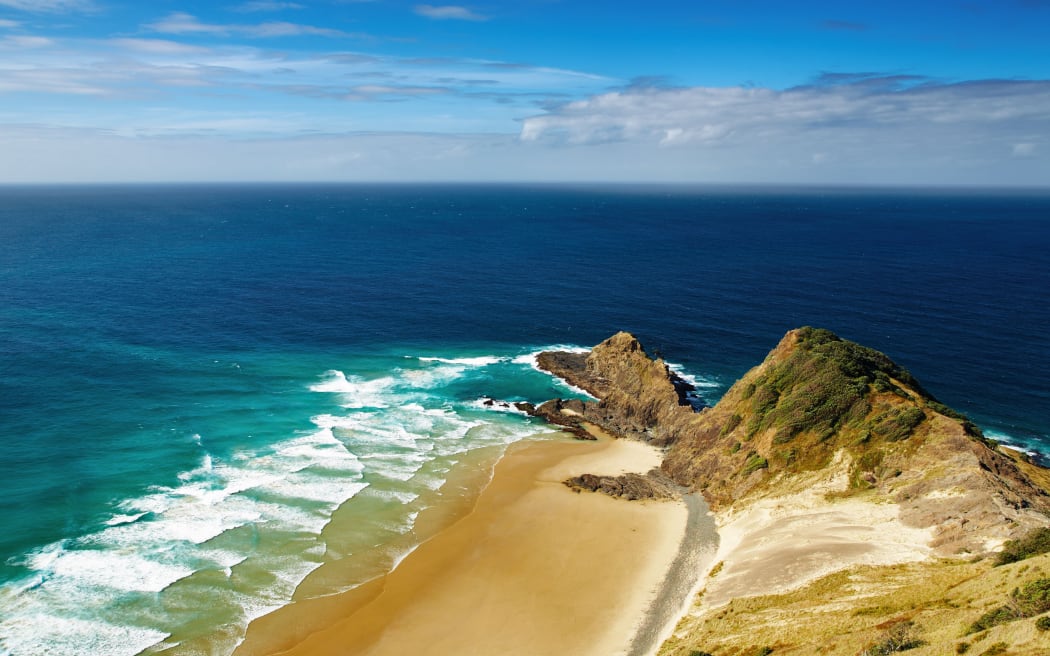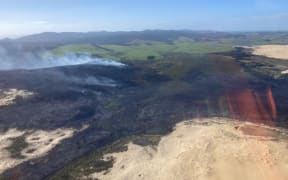By Taiha Molyneux, Māori news editor

Te Rerenga Wairua is a place for the living and for wairua (spirits) to leave, but it is not an urupā (cemetery), Ngāti Kuri chair Harry Burkhardt said. Photo: 123RF
Ngāti Kuri have issued a public notice reminding people not to scatter the ashes of human remains at Te Rerenga Wairua (Cape Reinga).
Located at the tip of the North Island (Te Hiku o te Ika), Te Rerenga Wairua is traditionally recognised as a place of spiritual transition for Māori.
It is also one of the country's most popular tourist destinations, visited by more than 120,000 people a year.
Ngāti Kuri chair Harry Burkhardt said the number of people approaching the iwi for permission to scatter the ashes of their loved ones in the area was growing, and the iwi wanted people to understand Te Rerenga Wairua was not an urupā (graveyard).
"It's not just tourists from overseas, we're being approached by people across the country, some of them Māori asking for permission to do this, that's not even taking into account people that just go up there and do it without talking to anyone."
Burkhardt said as kaitiaki (guardians) of Te Rerenga Wairua, Ngāti Kuri were taking a proactive approach to educating the influx of visitors expected over the Christmas holidays.
"Te Rerenga Wairua is very much a place for the living and the many taonga we have there, this is our home and our staff and our whānau are working in this place every day, culturally we don't mix living with dead, ie hunga mate ki te hunga mate, hunga ora ki te hunga ora."

Cape Reinga. Photo: 123RF
Ngāti Kuri kaumātua requested the public notice be shared and took the opportunity to clarify the spiritual significance of the area.
"It is a place for wairua (spirits) to leave and for us the living to sit in the presence of our taiao (environment) and remember them. Again it's not an urupā - cemetery.
"We also don't spread ashes in our wai - ocean and fresh waterways... Or in places where we work, live, gather kai, harvest for weaving and rongoa etc. This is our work place, our home and we also have many that visit Te Rerenga Wairua so it would be absolutely not appropriate to spread the human remains of your loved ones in our backyard. All human remains would be best in your whānau or community cemetery."
Burkhardt said Ngāti Kuri kaitiaki would be working on the land and watching over it throughout holiday period to help visitors enjoy their experience in a respectful way.
"We will have whānau taking care of our whenua, like they always do, they'll provide guidance and manaakitanga to manuhiri and take care of our home."
On February 2014, the Minister for Treaty of Waitangi Negotiations at the time, Chris Finlayson issued a Crown apology to Ngāti Kuri acknowledging it had failed to uphold the promises made in the Treaty of Waitangi to actively protect Māori interests, and to confirm and guarantee tino rangatiratanga, in its relationship with the iwi.
It also acknowledged its failure to respect the rangatiratanga of Ngāti Kuri for not always recognising its standing as an iwi.
The Crown vested cultural redress of Te Rerenga Wairua and 10 other properties to Ngāti Kuri as part of its Treaty settlement acknowledging the traditional, historical, cultural and spiritual associations between the iwi and the whenua.
Burkhardt said the iwi had always maintained their role as kaitiaki despite the Crown recognition and it would continue to do so diligently in the future.


